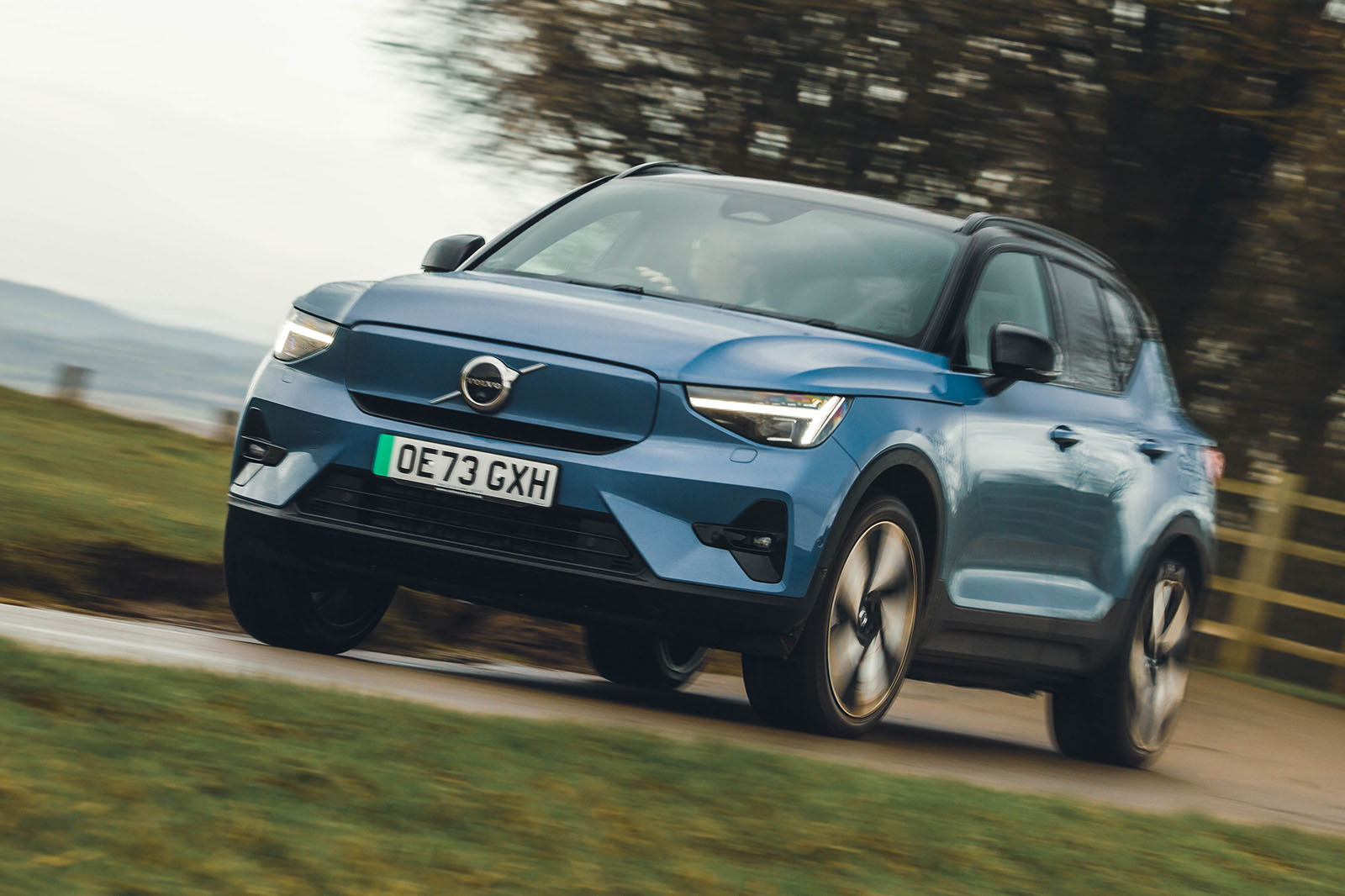The XC40’s interior design was perhaps less bold and adventurous than that of its exterior. Nevertheless, applying the same themes that brought us the lounge-like cabins of the Volvo XC90, Volvo XC60 and Volvo V90 to a class whose last words on cabin sophistication had, by 2017 at least, been the Audi Q3 and Range Rover Evoque, delivered results that looked and felt quite luxurious but also informal, and very pleasant with it.
And today, even as the car ages, it retains plenty of interior appeal. A mix of both soft-touch and harder plastics make up the fascia, but even the latter have a bit of lustre about them; its wool-blend seats are appealing to the touch; while the car’s doorhandles, air vents and other primary touch points have quite high material quality.
The dashboard is laid out in fairly sparse style. As in other EVs, our Recharge test car had no ignition or starter button, activating instead automatically as you get in and select drive, and switching off automatically as you leave (there is a ‘park’ button next to the gear selector, but the handbrake is fully automated). But Volvo still gives you a large, permanent on/off button come volume control for the audio system, and physical controls too demist and hazard warning functions.
The car’s Google-powered, portrait-orientated touchscreen multimedia system delivers the rest of the car’s controls. The home screen makes it easy to jump between menus, with other shortcut functions around the margins allowing you to access driver assistance presets fairly quickly, and without too much distraction from the road. Google-powered voice recognition is also a strength for the car, making it easy to set navigation destinations, and to make other simple information requests like “will it be raining when I arrive in Manchester”, which the system uses its onboard data connection to answer.
Up front, driver comfort is good. Our test car’s front seat offered some cushion angle adjustment, and both extendable under-thigh support and adjustable lumbar support. It wasn’t the softest of thickest-padded seat, but provided good touring comfort all the same.
More widely, passenger space is surprisingly good. At 2702mm, the XC40’s wheelbase is only 72mm shorter than the Volvo XC60’s; so although this might be a smaller car, it doesn’t come with a huge practicality compromise. Adults will find a reasonable amount of head and leg room in the back seats, and won’t wince at the idea of a long-distance trip.
There are two USB-C charging ports for the back row; our test car offered heated outer rear seats; there are cupholders in the fold-out centre arm rest; and Volvo also includes small storage trays just outboard of the outer seat cushions (although just what it intends you to put in them is a little puzzling). The car also comes with ISOFIX child seat anchorages for both outer back seats, as well as one for the front passenger seat.
The XC40’s 452-litre boot, meanwhile, isn’t the biggest among more compact SUVs; but it is quite a cleverly configured space, offering oddment storage at either side of the main loading area, and a pop-up boot floor that doubles as a shopping bag holder, and opens up useful space under the floor. Our test car also featured a retaining partition net, allowing you to prevent high-stacked loads from sliding forwards into the cabin.
Charging cable storage is provided within the car’s ‘frunk’, under the bonnet at the front – and there’s plenty of it. It remains a shame that Volvo doesn’t include a bonnet release button on the vehicle key, making you instead go in search of the old-fashioned bonnet release in the driver’s footwell every time you need to stow or access your cable.

